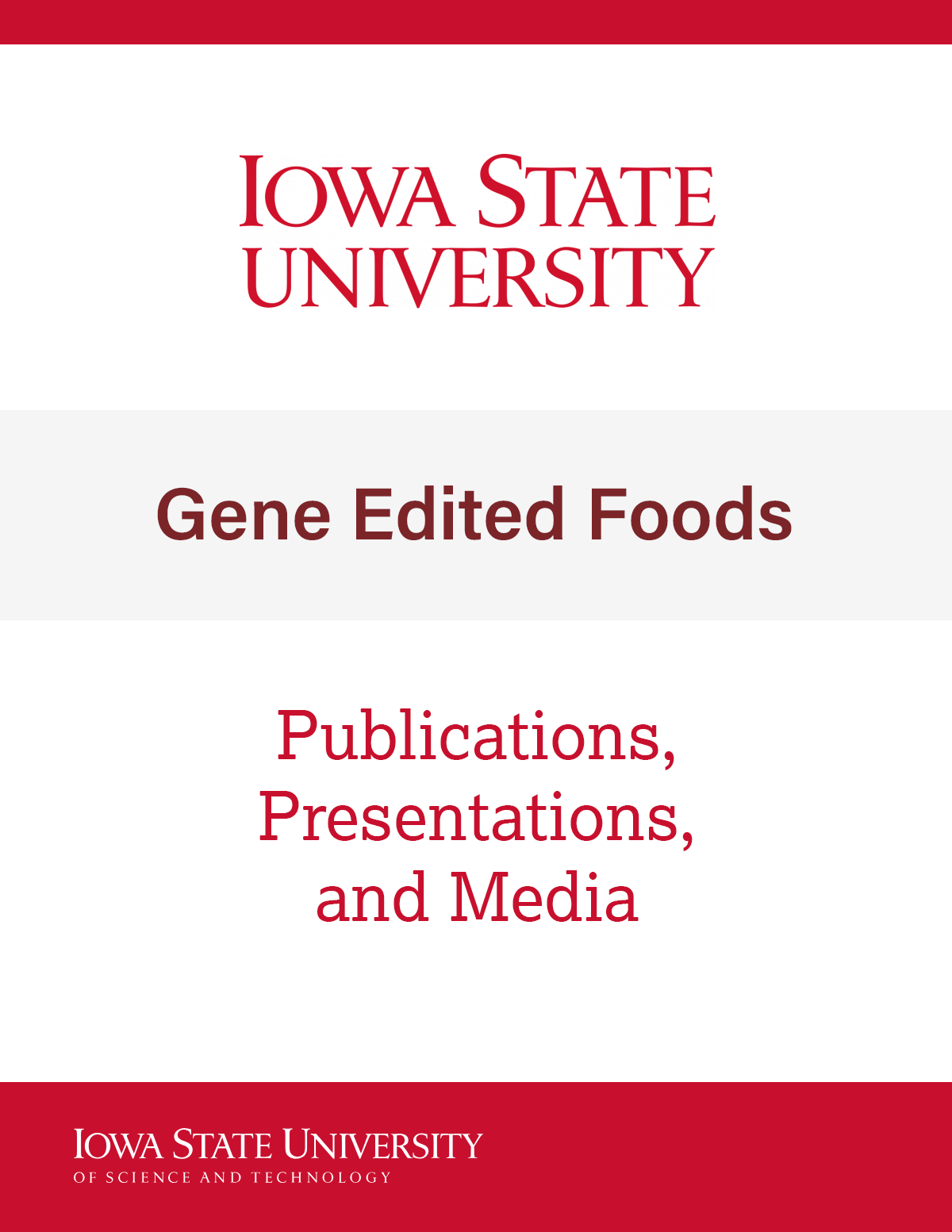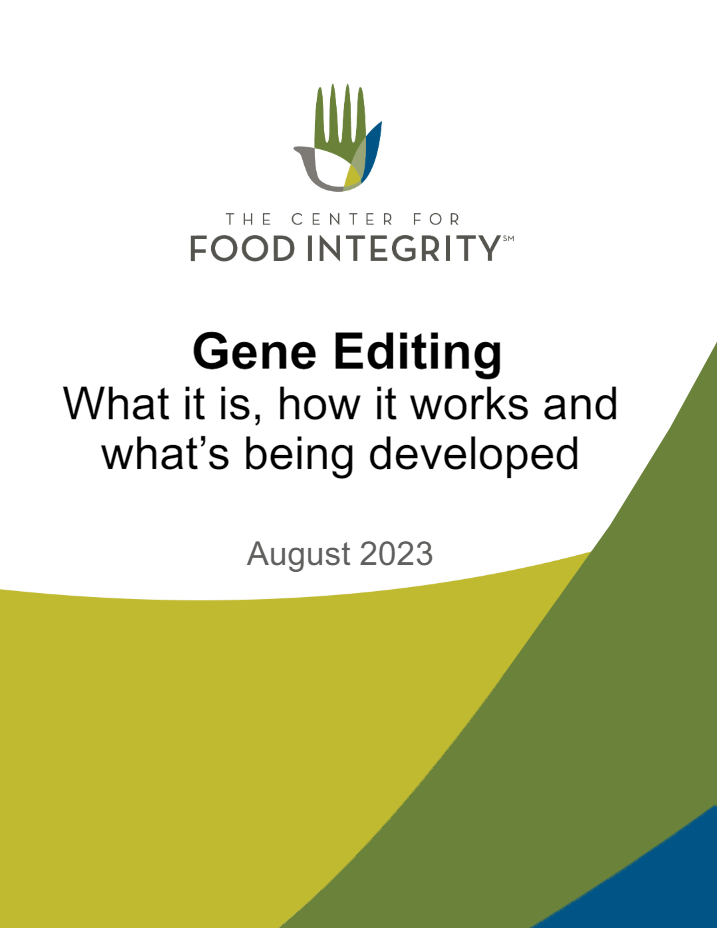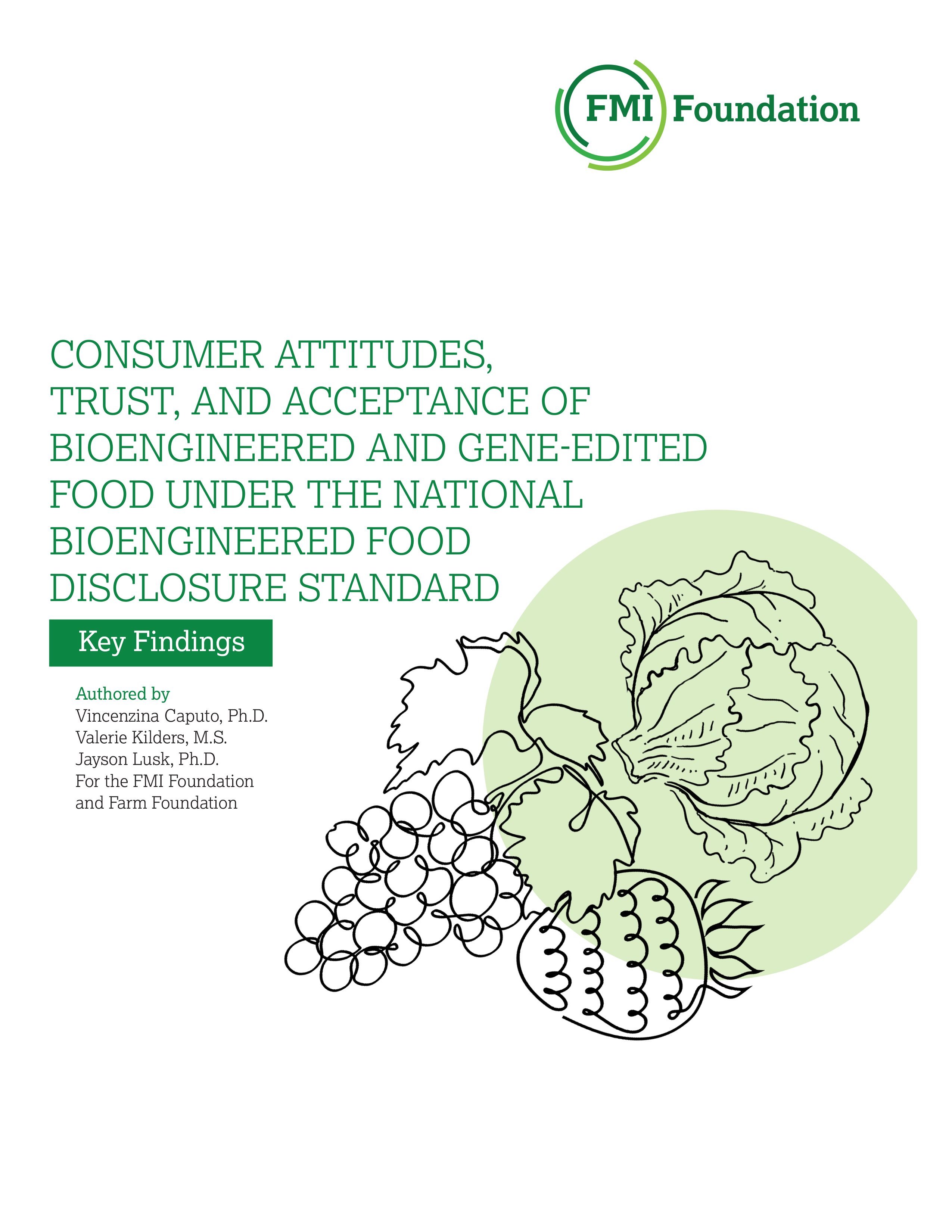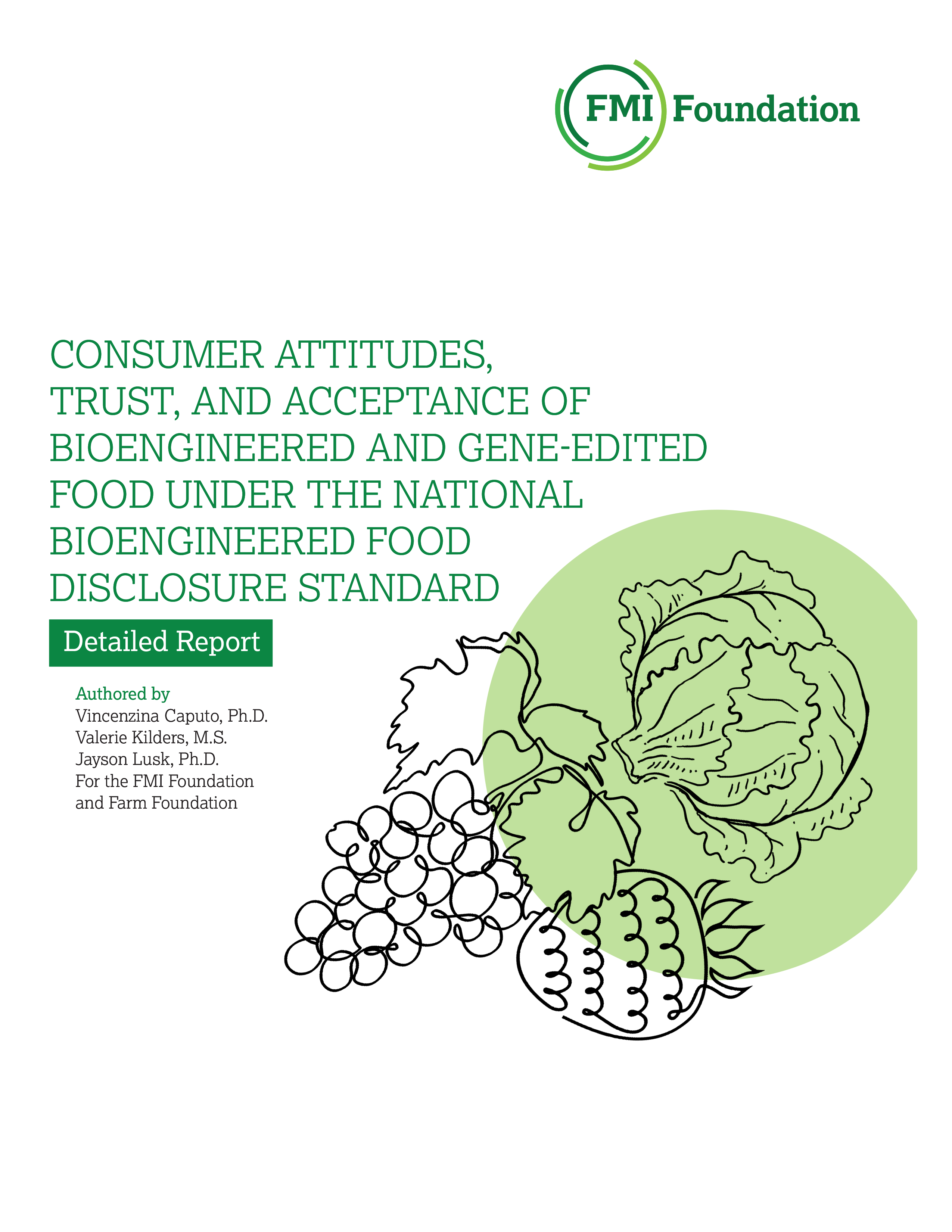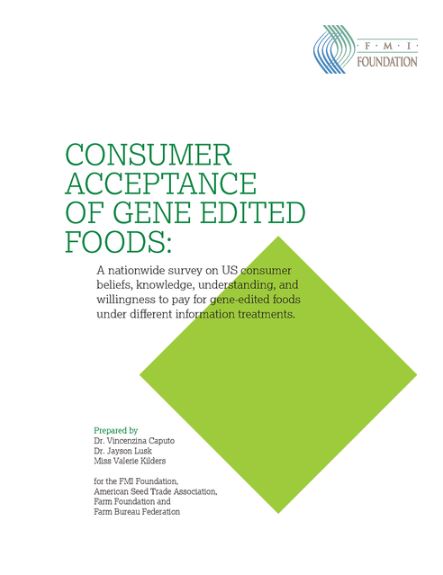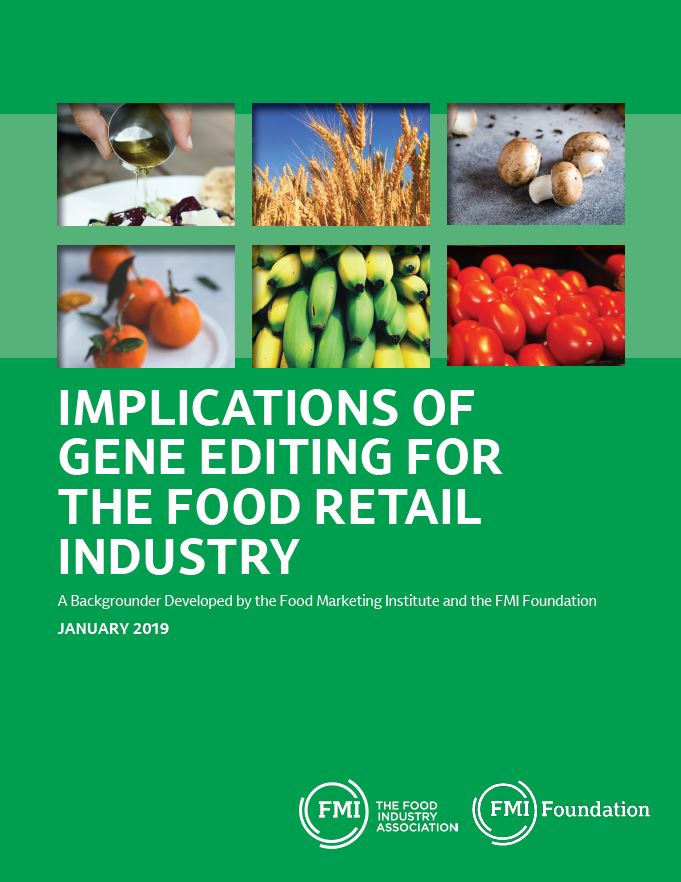-
Industry Topics
- Asset Protection
- Biotechnology
- Crisis Management
- Diversity, Equity & Inclusion
- Food Assistance Programs
- Food Price Inflation
- Fresh Foods
- Frozen Foods
- Health & Well-being
- Independent Operator
- Labeling
- Labor & Employment
- Nonfoods
- Omnichannel
- Payments
- Pharmacy
- Private Brands
- Supplier Diversity
- Supply Chain
- Sustainaiblity
- Technology
- Total Store Collaboration
- Wholesaler
- Workforce & Talent
- Research & Insights
- Events & Education
- Food Safety
- Government Affairs
- Get Involved
FACTS & FIGURES
Food production methods continue to evolve and innovate, becoming more technologically sophisticated. Advanced bioengineering methods, such as gene editing, are broadening the spectrum of bio-technological procedures available for use. Here are some details.
- Gene editing is a powerful technology with potential to address numerous societal health needs and overcome certain global food production challenges.
- Bioengineered and gene editing are both forms of agriculture biotechnology, but they are not the same process. To create a bioengineered – or bioengineered crop variety – scientists generally remove a gene from one organism and introduce that gene to a different organism at the cellular level. Genome editing (often referred to as “gene editing”), on the other hand, is a group of technologies that allow scientists to precisely insert, delete, or replace DNA at a specific locations within a crop’s DNA.
Several approaches to gene editing have been developed. As an example, the CRISPR system has generated a lot of excitement in the scientific community because it is believed to be faster, more accurate and more efficient than other existing gene editing methods.
While most gene edited crops are not yet being grown by farmers, examples of gene-edited crops created by scientists include non-browning mushrooms, waxy corn, slow-growing cabbage, and mildew-resistant grapes.
Policy Statements
Our current Board approved policy statement on this topic:
Gene Editing Resources
Iowa State University Research Project
ISU’s research project "Identifying Gaps in Public Trust and Governance Recommendations for Gene-Edited Foods,” includes journal articles, reports, and media pieces.
Gene Editing: What it is, how it works and what's being developed 2023
Presentation by the Center for Food Integrity (CFI) contains helpful updates about this new biotechnological tool.
Consumer Attitudes Toward Gene Edited Food Products: Key Findings
This key findings report delves deeper into what consumers want to know about gene edited food products and who they consider to be trustworthy sources in addressing biotechnological applications in food.
Consumer Attitudes Toward Gene Edited Food Products: Detailed Report
This detailed report delves deeper into what consumers want to know about gene edited food products and who they consider to be trustworthy sources in addressing biotechnological applications in food.
Consumer Acceptance Of Gene Edited Foods
This project looks at the market potential and consumers’ beliefs, knowledge, understanding, and acceptance of gene-editing technology and gene-edited foods.
Implications of Gene Editing for the Food Retail Industry 2019
This white paper provides background on gene editing terminology and production processes as well as identifies issues that may arise as consumers contemplate gene edited products.
Mega Menu
 Industry Topics address your specific area of expertise with resources, reports, events and more.
Industry Topics address your specific area of expertise with resources, reports, events and more.
 Our Research covers consumer behavior and retail operation benchmarks so you can make informed business decisions.
Our Research covers consumer behavior and retail operation benchmarks so you can make informed business decisions.
 Events and Education including online and in-person help you advance your food retail career.
Events and Education including online and in-person help you advance your food retail career.
 Food Safety training, resources and guidance that help you create a company food safety culture.
Food Safety training, resources and guidance that help you create a company food safety culture.
 Government Affairs work — federal and state — on the latest food industry policy, regulatory and legislative issues.
Government Affairs work — federal and state — on the latest food industry policy, regulatory and legislative issues.
 Get Involved. From industry awards to newsletters and committees, these resources help you take advantage of your membership.
Get Involved. From industry awards to newsletters and committees, these resources help you take advantage of your membership.
 Best practices, guidance documents, infographics, signage and more for the food industry on the COVID-19 pandemic.
Best practices, guidance documents, infographics, signage and more for the food industry on the COVID-19 pandemic.
© FMI All rights reserved.
251 18th Street S, Suite 1200, Arlington, VA 22202 | phone: 202-452-8444 | fax: 202-429-4519
Website design by Matrix Group International, Inc. ®
-
fmi-icon-frozen-goods
-
fmi-icon-workforce
-
fmi-icon-certificate
-
fmi-icon-pharmacy
-
fmi-icon-food-safety
-
fmi-icon-asset-protection
-
fmi-icon-education force-icon-3
-
fmi-icon-research
-
fmi-icon-government-affairs
-
fmi-icon-get-involved
-
fmi-icon-industry-topic force-icon-3
-
fmi-icon-labeling
-
fmi-icon-corporate-social-responsibility
-
fmi-icon-payments
-
fmi-icon-crisis-management
-
fmi-icon-private-brands
-
fmi-icon-food-assistance
-
fmi-icon-supplier-diversity
-
fmi-icon-fresh-foods
-
fmi-icon-supply-chain
-
fmi-icon-general-merchandise
-
fmi-icon-technology
-
fmi-icon-health-wellness
-
fmi-icon-total-store-collaboration
-
fmi-icon-Health-Reform
-
fmi-icon-wage-labor
-
fmi-icon-independent-operator
-
fmi-icon-wholesaler-topic
-
fmi-icon-newsroom force-icon-3
-
fmi-icon-tax-reform
-
fmi-icon-about_icon force-icon-4
-
fmi-icon-about_icon
-
fmi-icon-cart
-
fmi-icon-blog_icon force-icon-5
-
fmi-icon-cart
-
fmi-icon-Communications
-
fmi-icon-omnichannel
-
fmi-icon-biotechnology-topic
